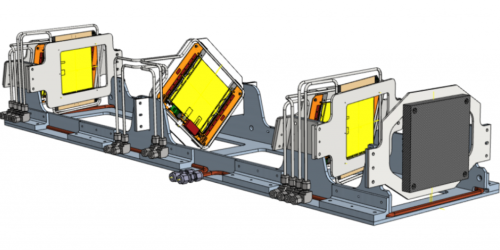Future Muon Experiment Could Search for Dark Matter
The muon’s magnetic moment is a hot topic, as theory and experiment disagree over its value (see News Feature: Repeated Particle Measurements Disagree with Theory—What Now?). The MUonE (Muon ON Electron elastic scattering) project—an upcoming experiment at CERN in Switzerland—aims to get to the bottom of this discrepancy. But it might also tackle another mystery: A new analysis shows that the MUonE Collaboration could potentially spot an elusive type of dark matter [1].
Scheduled to start later this decade, the MUonE experiment involves a high-energy muon beam that plows through a series of thin targets. Collisions in the targets produce high-energy electrons, measurements of which would help determine the muon’s magnetic moment. However, other particles will be produced in the collisions, and some of them might be dark matter, says Isaac Wang from Fermi National Accelerator Laboratory in Illinois.
Wang and his colleagues have determined the potential signal in MUonE from “inelastic dark matter.” This type of dark matter is made up of two particles: one heavy and one light. Such a combination could explain why dark matter searches have come up empty, as the light particle would be the dominant one in the Universe, while the heavy particle would be the one that interacts with normal matter. Therefore, the only way to see this type of dark matter would be to create heavy particles in high-energy collisions, like those planned for MUonE.
Muons aren’t required for this dark matter search, but they have some advantages, Wang says. A muon beam provides a cleaner background than a proton beam, and it offers a larger center-of-mass energy than an electron beam. On the basis of those advantages, Wang and colleagues show that the MUonE experiment could probe a large, unexplored region of dark matter parameter space.
–Michael Schirber
Michael Schirber is a Corresponding Editor for Physics Magazine based in Lyon, France.
References
- G. Krnjaic et al., “Discovering dark matter with the MUonE experiment,” Phys. Rev. Lett. 134, 161801 (2025).





